12 different types of tile – and the pros and cons of each one
From contemporary large-format porcelain to rustic terracotta and intricate mosaics, we explain the types of tile materials available for walls and floors

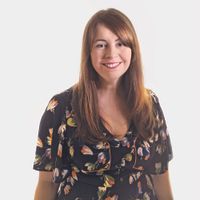
Amelia Thorpe
So you're drawn to tiles for your wall, floors, or possibly both. Then before you get caught up in decisions regarding color, pattern and patina, it's worth understanding the types of tile available to you.
Tiles can be made from a number of materials, all with varying credentials. Some will be ideal for use with underfloor heating – others will be totally unsuitable. Certain tiles will wear and develop character as they age, while others won't age a day. Natural stone tiles might need sealing and specialist cleaning, whereas the latest porcelains will require minimal maintenance.
As for the latest tile ideas and tile trends, there's certainly a demand for tiles that mimic natural stone and timber, cement, metals and fabrics. These offer all the advantages of a hardwearing, easy-to-maintain, long-lasting tile with the look of a luxury material. Also making a comeback, patterned tiles celebrate the glory of modern, geometric designs and opulent colors.
When it comes to size, large format tiles are increasingly popular and no longer limited to the hallways, kitchens and bathrooms, where their practical advantages have always been appreciated. 'More people are tiling their entire ground floor,' says Jules Archard, sales manager at Domus. 'In open-plan kitchens, a large-format tile used throughout creates a seamless look that unites the whole space.'
1. Ceramic

Produced from a blend of clays, traditional ceramic tiles are pressed into shapes, dried, glazed and kiln-fired. Unglazed ceramic tiles are available, too. Many are too 'soft' and porous for use on floors, and may crack, chip and stain. Some may also require sealing before and after instalation to protect from staining, so do your research before you buy.
The two biggest draws of ceramic tiles is the sheer range of colors and patterns available (which makes them a great choice for, say, a statement kitchen backsplash idea), and their affordability. 'Ceramic tiles are extremely light and typically about 6mm thick, making them easy to install,' says Ripples designer Charlotte Ashfield. 'On the downside, ceramic tiles are not very sturdy; hence they are not suitable for floors since they crack easily when subjected to high pressure and force.'
2. Porcelain
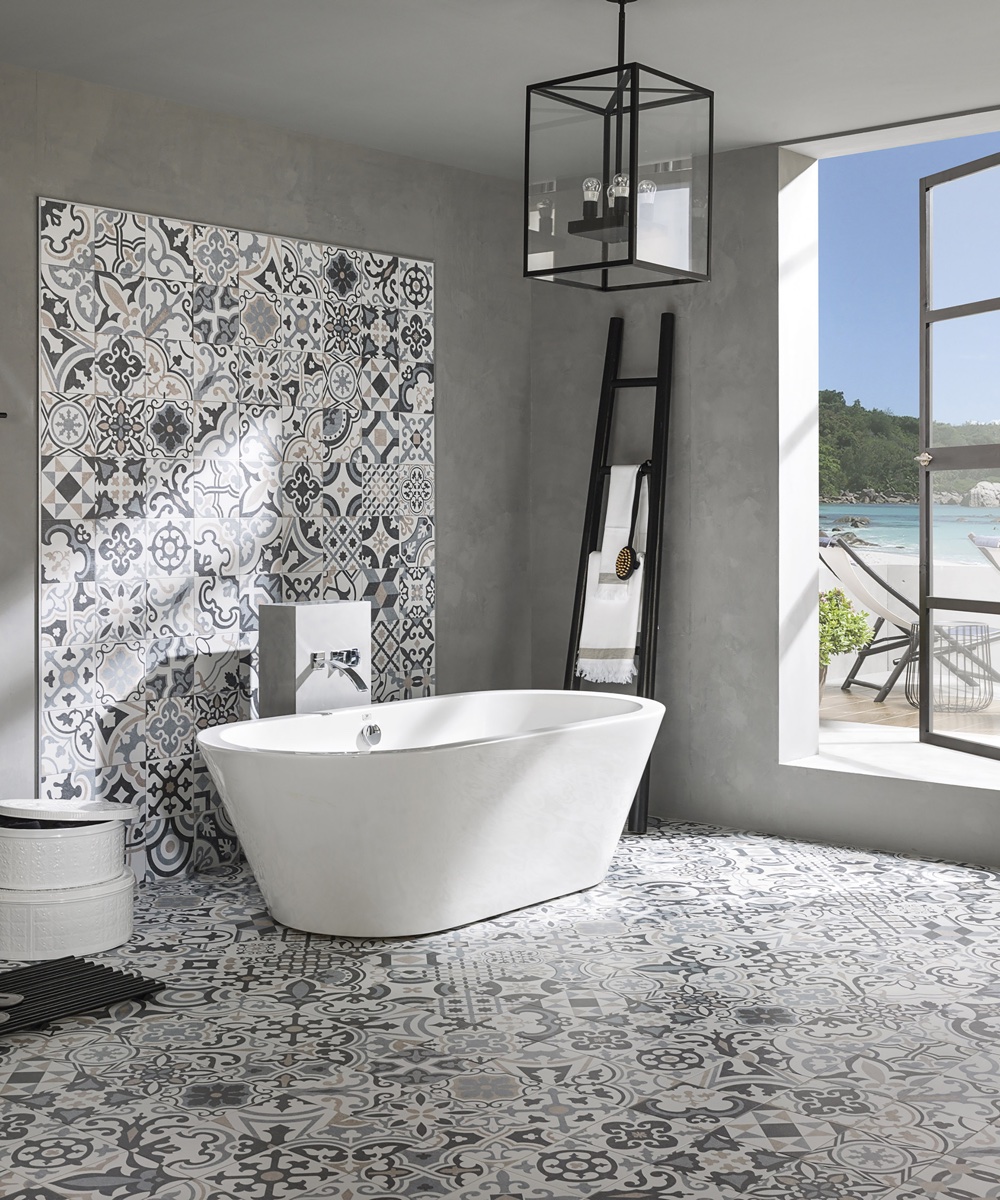
Porcelain tiles are made from fine clay mixed with quartz and feldspar, which is fired to 1,200ºC/2,200ºF. This high kiln temperature changes the nature of the clay, causing it to become very hard, almost totally non-porous and resistant to scratching and staining. According to Teresa Vega, marketing manager at Porcelanosa, 'porcelain tiles have less than 0.1% water absorption thanks to the source clay and additives. For flooring and for exterior uses this is critical.'
Design expertise in your inbox – from inspiring decorating ideas and beautiful celebrity homes to practical gardening advice and shopping round-ups.
Consequently, porcelain is an excellent choice for areas with high footfall - it's an ideal kitchen floor tile – especially as it does not need to be sealed and usually requires minimal ongoing maintenance.
Most porcelain tiles will be about 10 to 12mm thick, but new thinner tiles can be as little as 3mm thick. 'Think of them almost like laminate,' explains Jules Archard. 'Their real advantage is in the fixing. You can lay them over an existing tiled floor really quickly without the nightmare and cost of taking up the original tiles, plus you can preserve any existing underfloor heating. They are also very easy to cut and drill into, are ideal if you have underfloor heating because they are so thin, and their massive eco benefit is that they use about a quarter of the amount of material of a standard tile, making them so much lighter to ship.'
The latest developments in porcelain tile manufacturing, particularly in digital inkjet technology, have made exciting new designs possible. It's possible to reproduce individually unique tiles that mimic the appearance of marble, limestone and wood. Inkjet technology also copes beautifully with textured surfaces, which adds further authenticity, and it can be used to produce patterned tiles in a patchwork of styles.
3. Terracotta
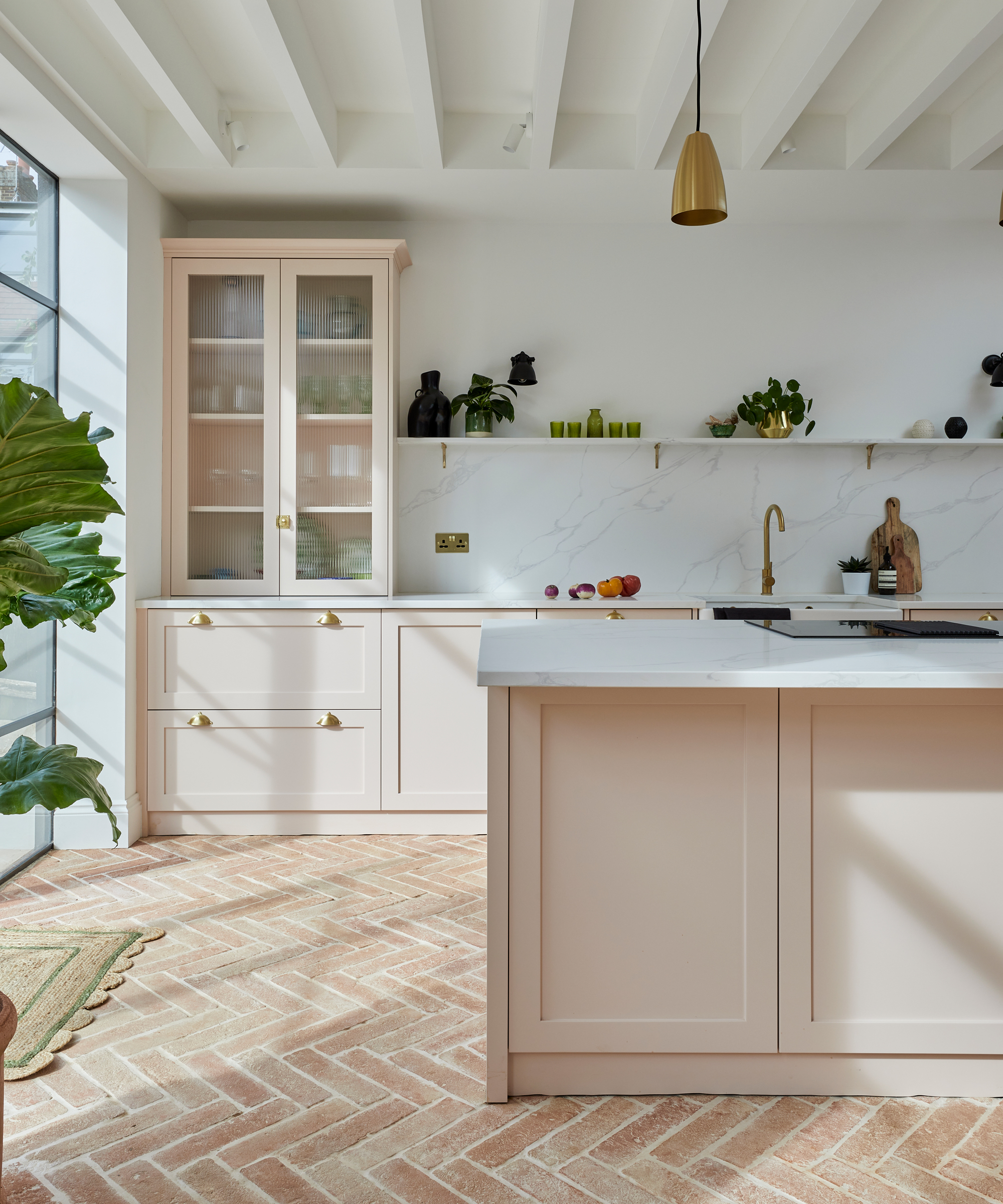
This age-old material, with its lovely mellow appearance, is great for creating a rustic look in a kitchen, bathroom, hallway or living room. Soft clay is molded into tile-shaped frames, dried and kiln-fired, resulting in rich, earthy-red tiles. It’s remarkably long-lasting, so you will be able to find reclaimed tiles easily, though it is always best to go through a reputable supplier so they can source quality pieces on your behalf. As with all stone flooring, terracotta tiles work well with underfloor heating.
Terracotta tiles may be handmade with a natural feel and finish, or machine molded to give a more consistent result. Untreated terracotta is porous and must be sealed, traditionally with a mix of half linseed oil to half white spirit, followed by a coat of beeswax. Opting for pre-sealed terracotta tiles avoids maintenance issues and they can be used in wet areas, such as bathrooms.
Popular formats continue to be 8in and 12in square, but tiles can be found in 18in+ sizes, though be aware that larger sizes may be thicker and therefore more difficult to install. 'Consider rectangular terracotta tiles that can be laid in a herringbone pattern,' says Joss Thomas, managing director of Indigenous.
4. Quarry
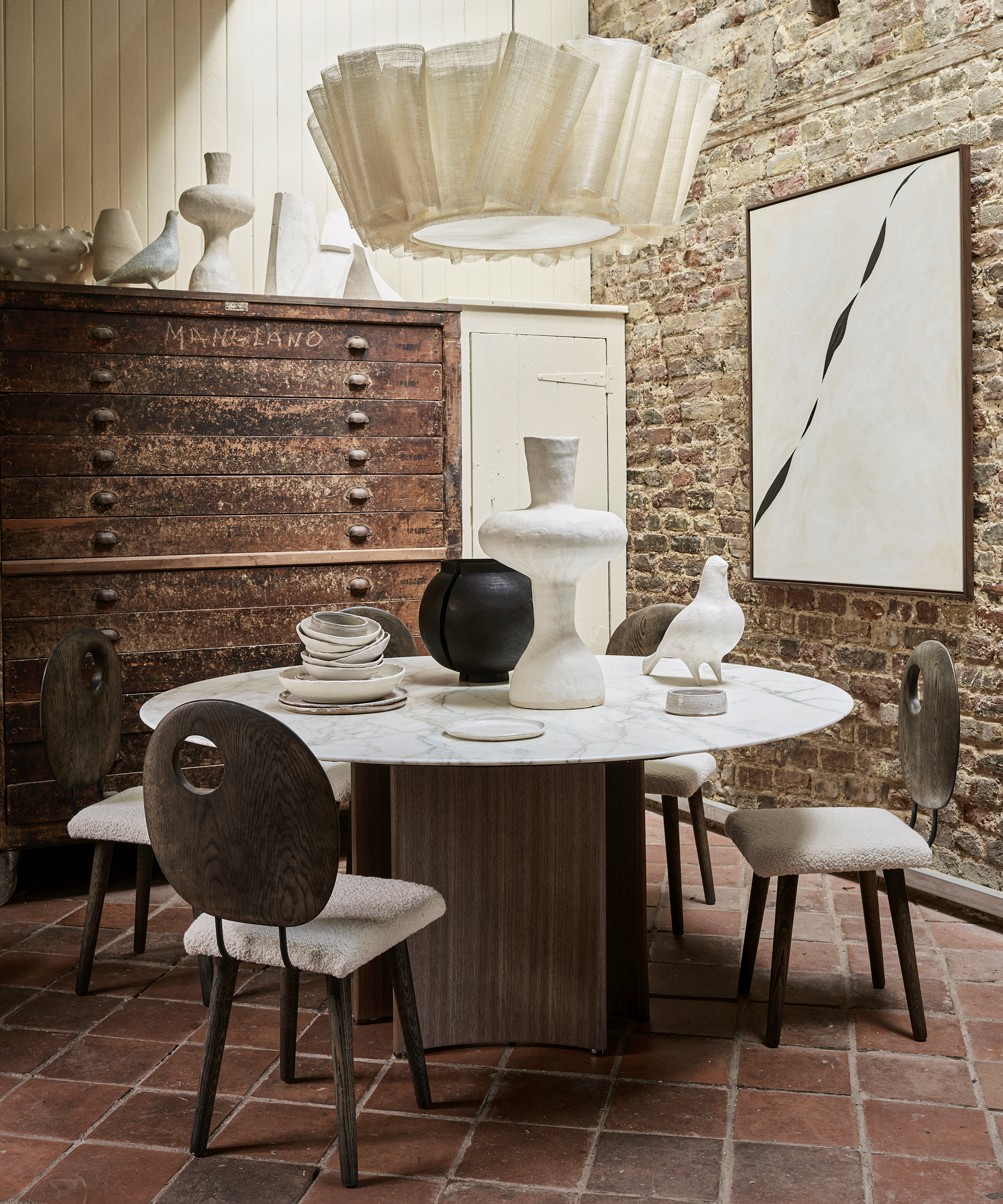
Like terracotta tiles, quarry tiles are also made from clay, but are far less porous due to the fact they are fired at a higher temperature. Hardwearing and durable, they’re perfect for hallway flooring, kitchens, living spaces and outdoors, but will require sealing.
5. Zellige
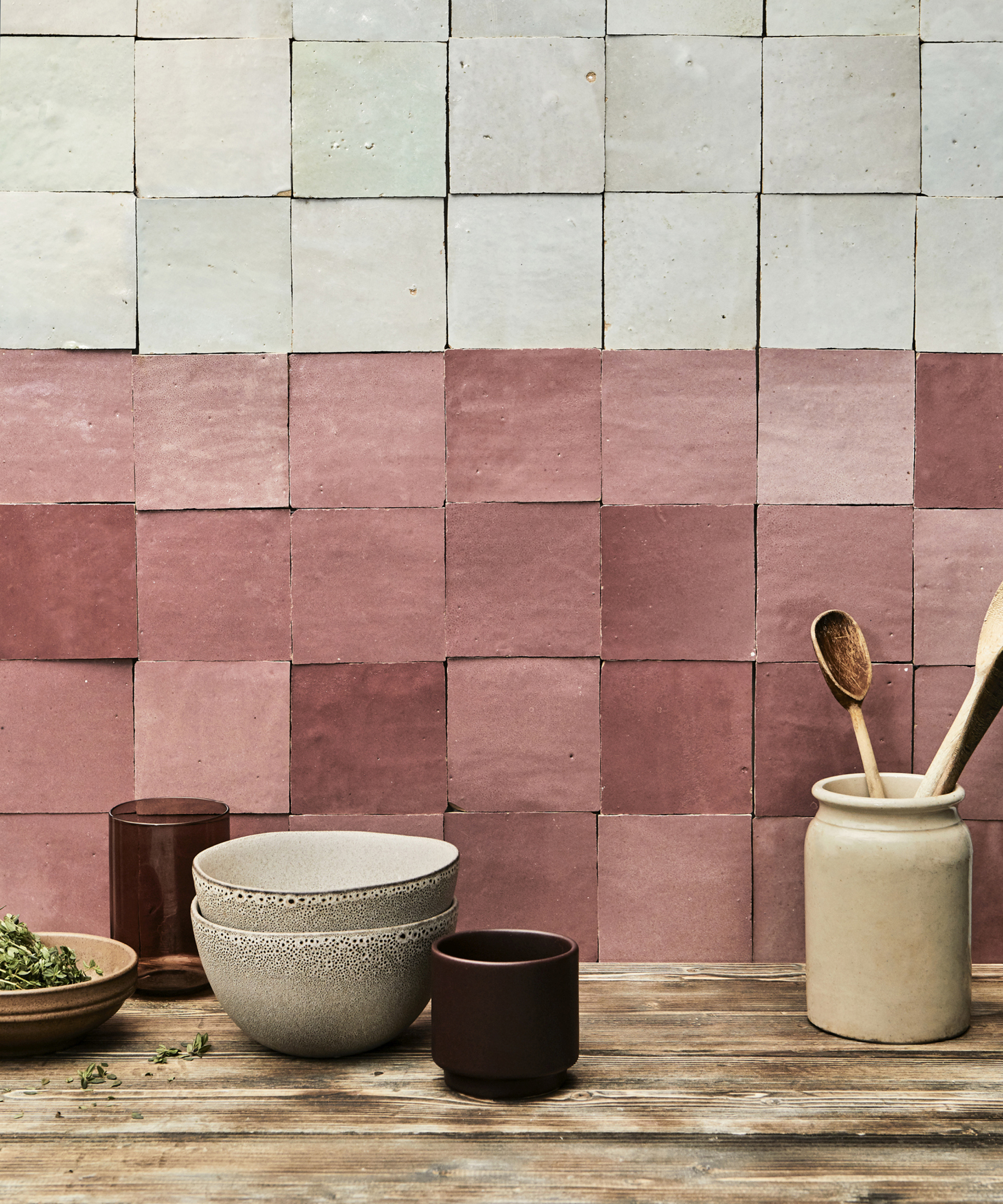
These handmade terracotta tiles, sometimes called Zellij or Zillij, originate from the ancient Middle East and Morocco. They are made of wood-fired clay or pressed cement, which is glazed with chips of enamel in jewel-like single colours. The elaborate designs usually feature traditional geometric patterns.
Expect colour variations, which are part of their intricate handmade charm, and a hefty price tag. You could easily pay more than $250 per sq yard. These stunning examples are by Otto Tiles.
6. Travertine
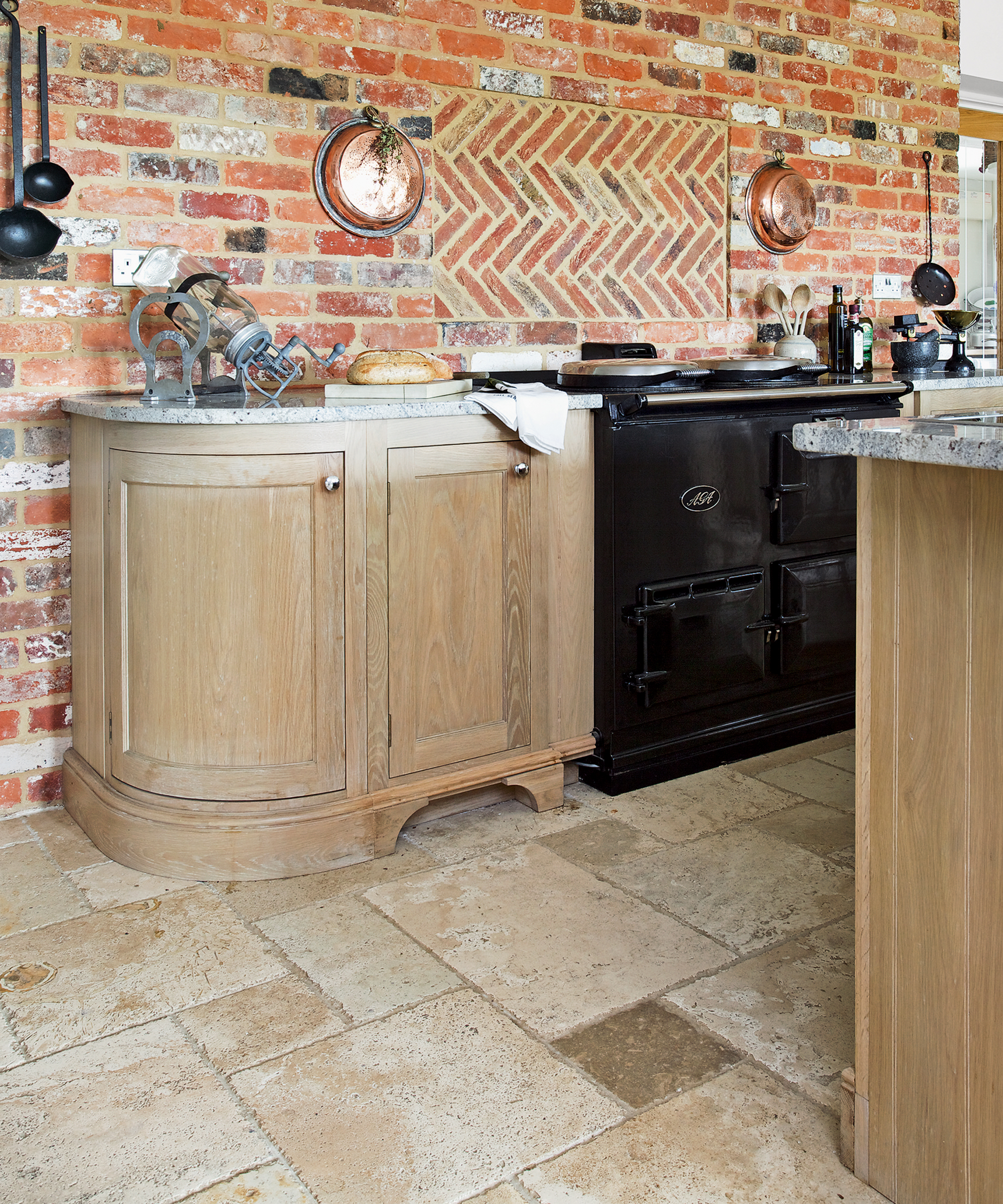
When it comes to kitchen flooring costs, travertine is one of the more affordable stone options, though it does have a porous surface. It can be bought already honed and filled from some suppliers, otherwise, you would need to fill it with a specific epoxy filler once it has been laid as flooring. The filled holes are visible, creating an interesting mottled look. ‘Because all natural stone is porous, it needs to be sealed,’ says Jason Cherrington, director of Lapicida. ‘Fortunately, hi-tech sealants offer as much as 15 years’ guarantee.'
Travertine tiles are more varied in color, ranging from milky coffee tones to dark tan with cream. ‘A lighter colored stone works if you’re after a crisp, clean look,’ says Hamish Smith, creative director at Artisans of Devizes. ‘But a stone that looks a little more lived-in and is, therefore, more forgiving might be better for a busy household with children and pets.’
Ask to see samples in person before buying, and if possible, visit the stone yard to pick out your own slabs. With natural stone, no two tiles will be the same, which gives your floor character, but which might also frustrate lovers of uniformity.
7. Limestone

As one of the most popular choices of stone flooring, limestone comes in many variations of colour, cuts and finishes. It works well both indoors and as an outdoor tile, making it a great option for entranceways and open-plan spaces.
Limestone tends to come in lighter, honey tones – and while it is not as porous as the likes of sandstone, it will require a strong sealant and will need to be maintained regularly to avoid premature staining and scratches.
8. Slate
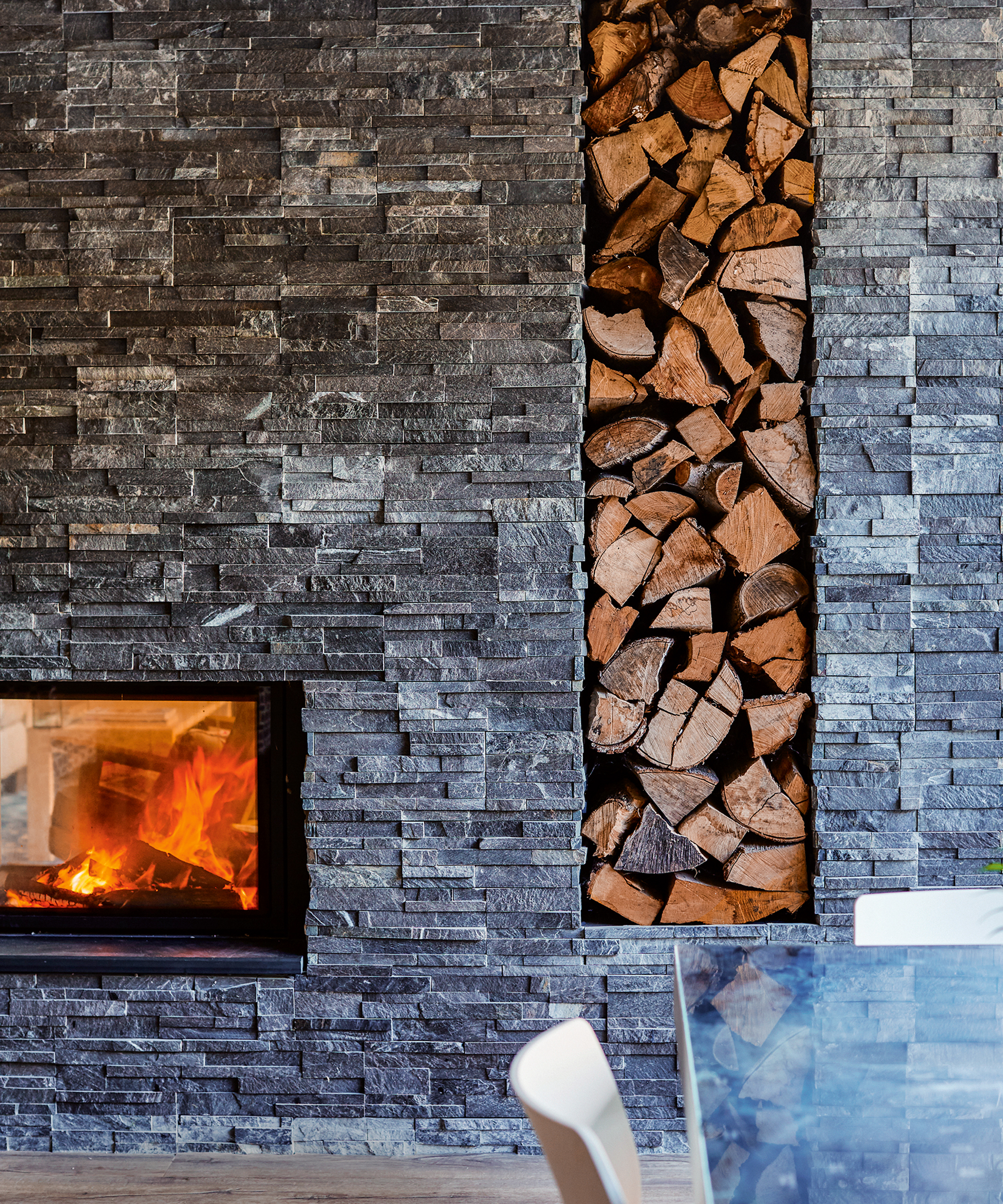
‘Slate is known for its rusty copper colors, combined with deep shades of charcoal and silver, all of which can work together to create a rustic look, perfect for period properties and quaint cottages,’ says Harriet Goodacre, tile consultant at Topps Tiles.
It is important that slate is polished and properly sealed to prevent any chips or staining. ‘When sealing, you can add a color intensifier to enhance the look, giving a glossy sheen for an even more eye-catching appearance.'
9. Reformed stone

Reformed stone tiles are a relatively new phenomenon in the industry, but boast some impressive eco credentials. For example, Ca Pietra's new Reform range is made from 60 per cent recycled stone materials and in a carbon neutral factory. When you consider the environmental impact of quarrying original stone, it's easy to see how this is a favorable alternative.
Available in three sizes and 12 distinctive colors, the tiles are a modern take on a rustic, tumbled look. They will require sealing but are extremely versatile – you can use them on walls and floors, inside and out.
10. Encaustic/cement
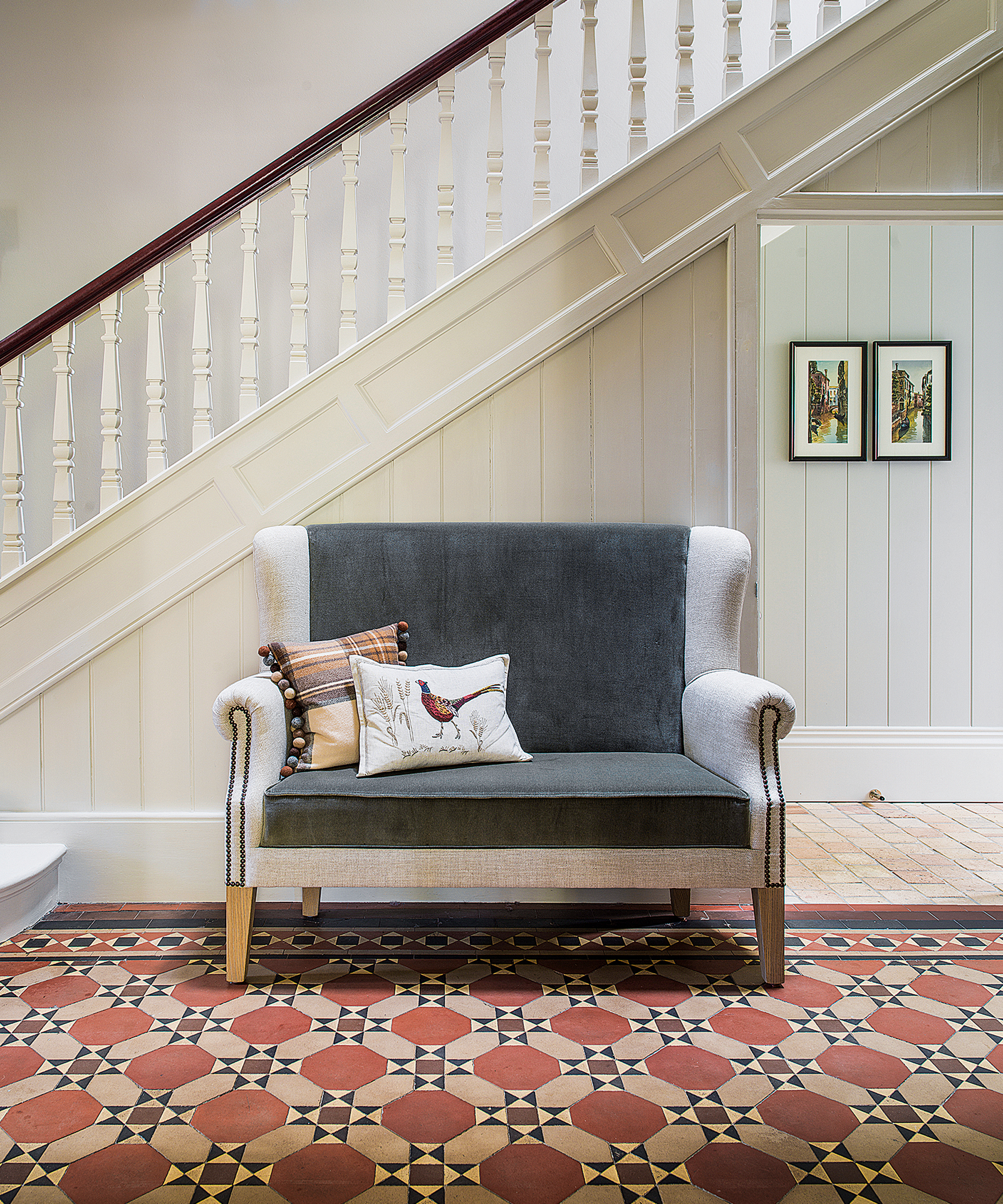
Beloved by the Victorians and often used on entrance hall floors, encaustic tiles feature decorative designs that are stamped or literally 'burnt into' the clay body. The stamped impression is filled with liquid clay of a contrasting colour and the clays fuse together during firing. As the pattern is not a product of a superficial glaze, but of colours inlaid into the body of the tile, the design will remain as the tile is worn down.
Historically encaustic tiles were often combined with less expensive natural clay quarry (plain square) tiles and geometric unglazed tiles in straight-edged shapes, such as triangles and lozenges. They remain among the most expensive tiles to buy.
'Encaustic cement tiles do wear and fade over time,' says Irene Gunter, founder of interior architecture and design firm Gunter & Co. 'However, if you are the kind of person who embraces the patina that develops, this ageing process is all part of the charm of cement tiles, and only adds to their attraction. We love using cement tiles in more rustic interiors, whether in a Cotswold farmhouse or an Ibiza beach house.'
11. Marble

'Lovers of natural stone have always found something to love in marble, not least because every tile is unique with beautiful veining,' says Irene Gunter. 'This lack of uniformity is one of the main charms of natural marble tiles.'
'It's suited to any room, bringing its luxurious good looks to walls, floors and countertops in a marble bathroom. The cool shades of marble, particularly the whiter tones, create a feeling of openness in the room and help to brighten it up. It helps that expanses of marble remind us of the hotels and villas in sunny Mediterranean holiday destinations, too!'
'Marble is not as durable as granite, for example, and will scratch and wear over time. This will soften it and give it a patina, but this can be a negative if you like to keep your surfaces pristine. It's also vulnerable to staining – any spills must instantly be cleaned up. To keep marble protected, it needs to be sealed when installed and resealed every year after that.'
'The overall cost of marble tiles can be higher than other tile options. This is thanks to the price per tile, as well as the need for professional installation. In addition, the ongoing maintenance and need for re-sealing means there are upkeep costs throughout the life of your tiles.'
12. Mosaic
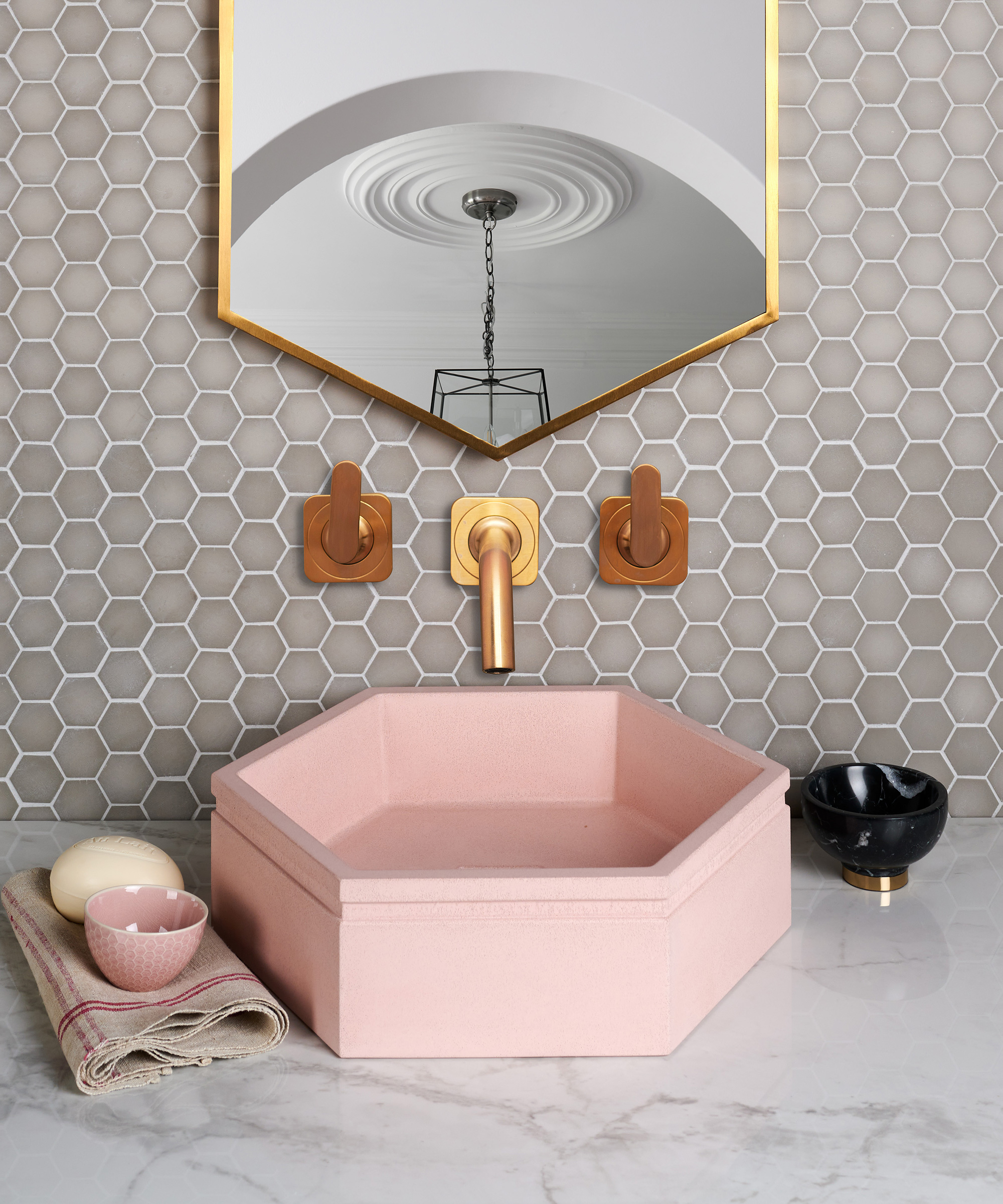
Mosaic tiles can be made from many different materials, including glass, porcelain and glazed ceramics as well as natural and precious stones. The latest designs mix materials to create interest. Mosaics tend to be a luxury choice, given the amount of work involved in their making, but they offer a unique texture and can be used to break up a large area of flooring and create striking visual appeal.
'Mosaics are easy to clean and retain their good looks over time, which is a definite plus point in the bathroom or kitchen,' says Irene Gunter. 'Their non-porous surface is resistant to stains, mold, mildew and harsh cleaning products.'
Most mosaics come on sheet backing, which can be cut down to the required size for installation or into strips to be used as a border or feature. By their nature, mosaic tiles tend to be thin, so make sure that your wall or subfloor is perfectly flat because any lumps and bumps will be accentuated.
'Installing mosaic tiles is a skilled task and definitely not a do-it-yourself job,' advises Irene Gunter. 'As such, if you are working with an interior designer, take their recommendation when selecting a tiler who is experienced in mosaics. Be prepared to invest in someone who will do the job well, as mistakes will show up all too clearly.'
'And inevitably, mosaic tiles mean more grouting, so we recommend choosing an epoxy grouting, which is superior to the standard variety when it comes to cleaning grout, especially when choosing a lighter-colored option.'
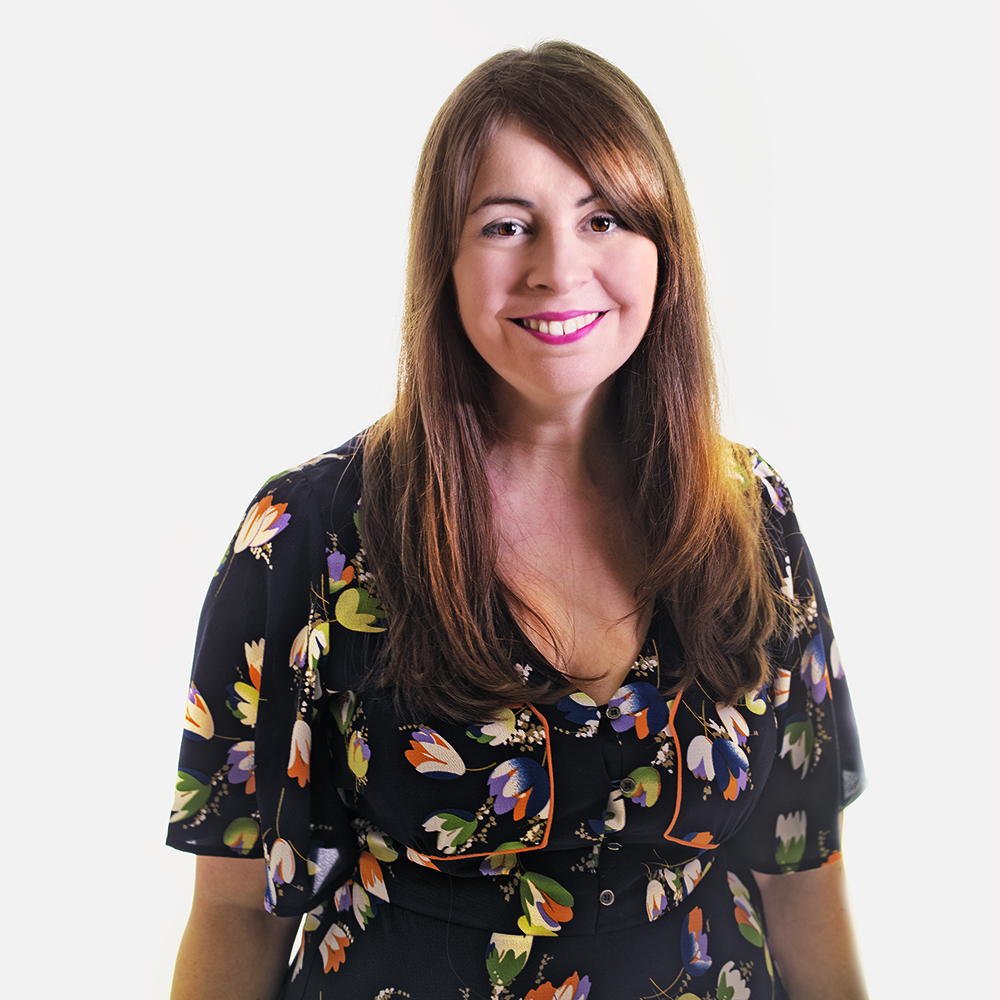
Amy Cutmore is Editor-in-Chief, Audience, across Future's Homes portfolio. A homes and interiors journalist of 20 years standing, she has spent much of that time writing about technology, appliances and kitchens. While other people count how many countries they've visited, Amy tots up how many countries' washing machine factories she's toured (it's eight by the way, from South Korea to Slovenia). She can't leave the house without a decent pair of noise-cancelling headphones, and is always ready to explain an acronym – be it QLED, DAB or HDMI.
- Amelia ThorpeContributing Editor